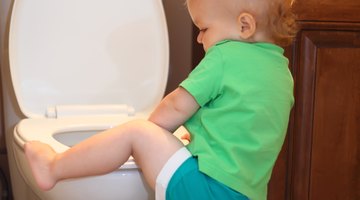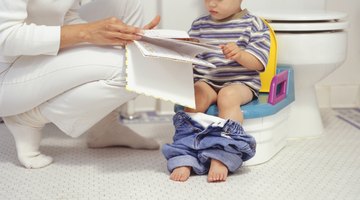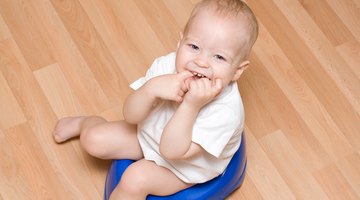How to Potty Train a 16-Month-Old
Potty training can be a long process. Most children are ready to begin potty training at 24 to 27 months, according to the University of Michigan Health System. However, you can start as early as 16 months. You should expect the potty-training process to take longer, the earlier you begin to teach your child the process. Normally, it can take between three and six months to potty train a child.
Look for signs of readiness before deciding to potty-train your 16-month-old. Such signs include communication skills; the ability to walk to the bathroom and pull down his pants; the ability to follow simple instructions; and an interest in imitating older siblings or family members. Your child should have a fairly predictable bowel movement schedule and should be able to stay dry for at least 2 hours.
Familiarize your child with the bathroom. Take your child into the bathroom with you and allow him to sit on the toilet fully clothed while playing with a toy or looking at a book. The purpose is to encourage your child to feel comfortable in the bathroom.
Watch videos or read children's books to your child on the subject of potty training.
Encourage your child to associate the toilet with a wet or soiled diaper. You can do this by placing your youngster on the toilet right after you change her diaper or by placing her on the toilet without any diaper a few times per day. Try to place your child on the toilet after having a large beverage or a few hours after having a meal, in case she does need to use the toilet.
Praise your child for sitting on the toilet. Even if he doesn't use the toilet, praise your child for cooperating.
Increase the number of times your child sits on the toilet. Try to have her sit on the toilet in the morning, after lunch and before bedtime.
Make the transition to underwear. Underwear can be a big incentive for a child. Give your kiddo underwear after having repeated success on the toilet.
Warnings
Accept that accidents happen. Don't yell at your child. Clean up the accident and patiently encourage your child to try again.











